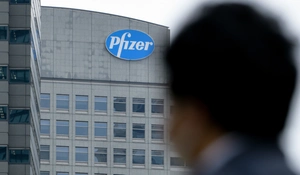As India nears the 1.6 crore mark of anti-Covid-19 shots a year after vaccinations were launched, there is a marked absence of political noise and the ugly sparring over supply and safety of the jabs seems a distant memory.
The CoWIN dashboard reflects smooth administration of shots to the newly eligible 15-17 group, belying concerns about parents hesitating to get kids vaccinated. In fact, unlike in many parts of the world, vaccine hesitancy is low in India given that more than 90% eligible adults have received the first dose.
Through much of May, June and July last year, opposition states and the Centre were continually at odds over oxygen supply and availability of vaccines as the Delta wave ravaged the country. A squabble over central control over vaccines saw a short-lived — and failed — experiment in May when states and private hospitals were allowed to procure vaccines independently.
While oxygen supply was truly stressed, and only swift innovations like construction of special ramps for loading the gas onto freight trains, and quick fixes like diverting industrial supplies, eased the situation even as infections plateaued, vaccine availability remained a "just-in-time" matter till August.
It was not that vaccine supplies dried up. But states had to do with a visibility of 2-4 days of stocks and manage supply chains and vaccination centers accordingly. This led to frequent claims that vaccines are running out, in turn leading to the opposition and the Centre trading charges.
Once Covaxin supplies became more regular after Bharat Biotech's Bengaluru plant overcame initial hiccups, and more vaccines received the regulatory nod, the complaints vanished. States with more determined administrations began to show results and laggards stood out without the excuse that vaccines were in short supply.
The vaccination programme reached a critical mass, and the 1 billion shots achieved on October 21 last year, was a remarkable feat. It settled any disputes whether the Indian programme was a success or not. In recent months there have been more than a few days when more than 1 crore jabs have been administered with the door-to-door campaign in November reviving the pace of the programme.
The unfolding Omicron wave has not changed matters. For one, the variant is less lethal, but most importantly studies and clinical evidence shows vaccination offers strong protection against serious disease. Having covered more than 90% with the first dose and nearly 70% (eligible adults) with both doses, the vulnerable section of the population has a degree of immunity (further enhanced by widespread infection during the second wave).
The government had set December 31, 2021, as the target to achieve full adult vaccination. Yet, there is little quibbling over a "missed" deadline and the reasons lie in the staggering reach of the programme with India recording 111 shots per 100 population against a global average of 121 (all doses counted individually), having improved its count significantly.
No wonder the headlines are all about defections ahead of the coming assembly polls. Vaccines are no longer a matter of contention.










Leave a Comment
Your email address will not be published. Required field are marked*